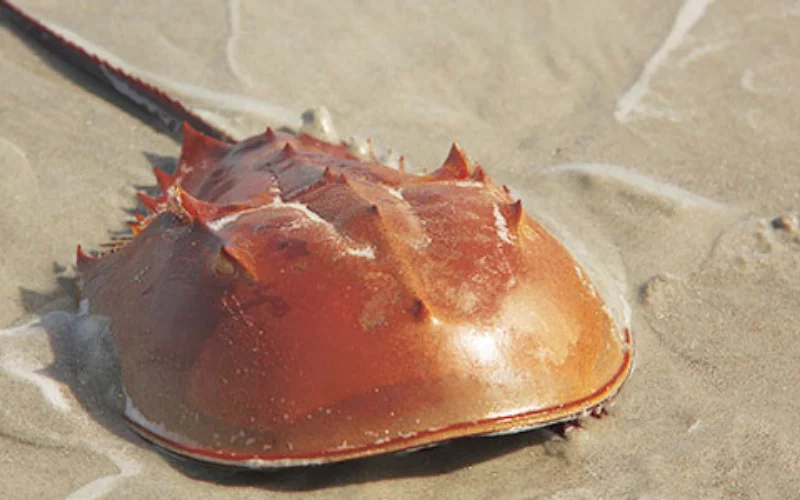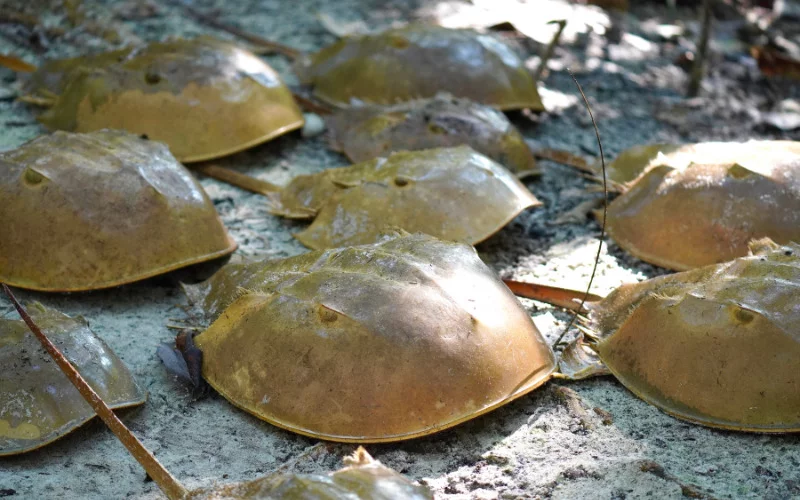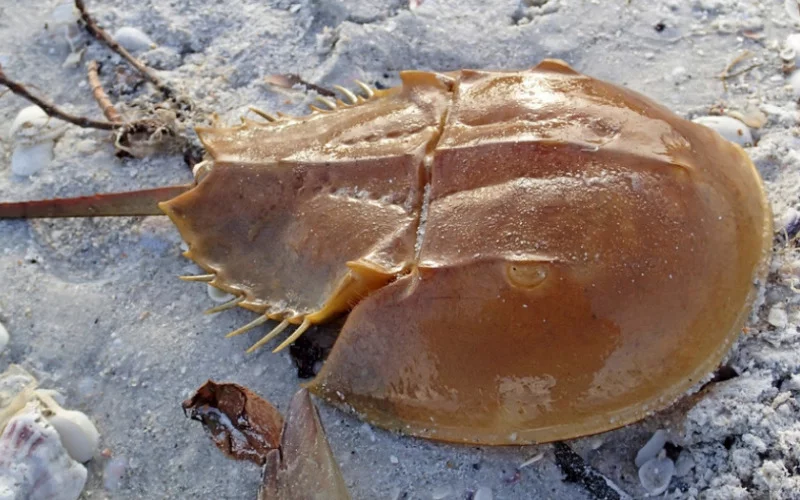We are sure that you have come across the name “Horseshoe crabs” before, probably on a TV show, radio, or social media. If you have been wondering how important these creatures are to humans, here is a brief overview.
Horseshoe crabs are marine arthropods that possess an exoskeleton like the shape of a horseshoe; this exoskeleton is called a carapace.
We will discuss why the horseshoe crabs are essential to humans as well as wildlife and the ecological system; we will also look at some interesting and amazing facts about these species of animals.
What Are Horseshoe Crabs?

Like we previously said, horseshoe crabs are marine arthropods; it is not a true crab, is not it a crustacean? It’s just a different order of arthropods—these creatures dates to about 450 million years ago, existing 200 million years before the dinosaurs.
The horseshoe crab prefers to live in shallow waters, and on the soft or muddy surface, they can be mostly found in the United States, south and southeast Asia.
Female horseshoe crabs are generally larger than the males, but some species are smaller (C. rotundicauda) while some are larger (T. tridentatus). They molt once every year; usually, in late July, the females can lay between 60,000 to 120,000 eggs.
As the world continues to discover more uses of the horseshoe crabs, there are some existing uses of the horseshoe crabs that make them vital to humans and the ecosystem.
Why Are Horseshoe Crabs Important to Humans?
Horseshoe crabs have a lot of importance to the ecosystem, wildlife, and humans, but how exactly do they benefit humans? Horseshoe crabs are eaten and are used to prepare meals in some parts of Asia.
They are also useful resources in Biomedical Research and can be well utilized in the medical field to manufacturing vaccines.
Interesting Facts About Horseshoe Crabs

Like every other anima, there are things to know about a horseshoe crab ad some of these things are stunning. Here are some intriguing facts about horseshoe crabs.
- Horseshoe crabs take a lot of time to attain sexual maturity, usually 10 to 12 years.
- They are living fossils. These crabs have lived for over 450 million years. There are four different horseshoe crabs species, three of which can be found in the southeast of Asia, and the last can be found in the United States.
- They can swim upside down. The young horseshoe crabs will use their book gills for other witty reasons aside from breathing.
- These creatures are not crabs; they are more closely related to arachnids like spiders than to lobsters.
- Horseshoe crabs are sensitive and are not dangerous. Their tails are not dangerous they use them to flip themselves over when overturned by a wave; speaking of tails, DO NOT pick up a horseshoe crab by its tail as they can get seriously injured. Instead, you should use your hands and gently pick them up on both sides of the prosoma.
- Horseshoe crabs have quite a number of eyes that no creature is allowed to have, and their eyes are sensitive to light.
- Their eggs serve as food for migratory birds like the red knot and other sea creatures like sea turtles. This may result in most of the eggs not making it to adulthood.
- They gather in a large group during spring and summer. This gathering often indicates their spawning season and usually takes place in the mid-Atlantic states.
- Some male species do not attach themselves to the female, but they still fertilize the eggs.
- Some horseshoe crabs hatch from their eggs looking like adults; they are called juvenile horseshoe crabs; the only difference between the juvenile horseshoe crabs and the adult horseshoe crabs is that they have a smaller tail.
- Horseshoe crabs have legs near their mouth. These are called pincers, they are used to move the food closer to their mouth, but they still possess a different pair of legs for walking.
Why Is the Horseshoe Crab Blood So Valuable?
The blood of horseshoe crabs is important mostly because of their contribution to the medical field. Their blood is blue as it contains copper and a substance known as Limulus Amebocyte Lysate, also known as LAL.
Horseshoe crabs are the only natural source of this compound (LAL). And LAL can detect a bacterial toxin called endotoxin; if even a very small amount of endotoxin makes its way into a vaccine or injectable, the result can be deadly.
What Is Horseshoe Crab Blood Used For?
They prevent a bacterial toxin know as endotoxin from invading a vaccine. The horseshoe blood clots around these bacteria preventing them from spreading further. If there is no bacteria present, there won’t be coagulation.
For this reason, tons of horseshoe crabs are required by pharmaceutical industries, and over a million of these horseshoe crabs are harvested and bled for this purpose.
The FDA demanded that all manufactured vaccines pass through the LAL test, and you can guess where this LAL comes from.
Do Horseshoe Crabs Have Eyes
Yes, the horseshoe crabs have eyes. And remember when we said they have quite a number of eyes? Well, the horseshoe eyes have ten eyes, all of which are functional.
Their eyes are used for finding their mates and for sensing light. Its compound lateral eyes, which are the most obvious, are used to find mates; their compound eyes have up to 1,000 receptors and cones like a human, only that it is much bigger.
Their compound eyes are chemically facilitated at night for better sensitivity to light; this allows a horseshoe crab to identify other horseshoe crabs in the darkness properly.
There are five additional eyes, two median eyes, and one endoparietal eye. These eyes help them detect ultraviolet light from the sun and the moon; this is helpful during their spawning season.
Multiple photoreceptors prevent, but their use is not fully known. However, some believe that they are used to help the brain synchronize light and darkness.
Where Are Horseshoe Crab Eyes Located
Its compound lateral eyes can be found on each side of the horseshoe crab prisons. Behind each lateral eye, there is a rudimentary lateral eye and then towards the front of the prosoma is a small bridge with three dark spots that are often mistaken for the crab’s nose, but they do not have a nose; they have gills. Two of those dark spots are the median eyes, and then the other is the endoparietal eye.
The photoreceptors are located on the horseshoe crab telson. The telson is its tail.
What Makes Horseshoe Crabs Special

Horseshoe crabs are special for many reasons, but their most valuable asset is their blood, as it is widely used in the medical field to produce drugs and vaccines.
Many horseshoe crabs are harvested each year for this purpose, and as much as they contribute to the medical field, they are endangered.
The harvest of horseshoe crabs dates to the 1970s when their value was first discovered; since then, there has been a continuous harvest of these creatures.
According to IUCN (International Union for the Conservation of Union), the horseshoe crabs made the list of vulnerable and endangered species.
When the horseshoe crabs are harvested and bled, only a few die after the process, and a few begin to exhibit changes after bleeding.
So far, it is recorded that only five companies harvest and bleeds the horseshoe crabs they are; Lonza, Charles River Endosafe, Wako chemicals, and lastly, Limuli.
And these chemicals (LAL)/are sold at $15,000 per quart, and the biomedical field pays up to $375,000a year for harvesting and bleeding. And since the harvest and the bleeding, fewer female horseshoe crabs have shown up for spawning.
The horseshoe crabs are eaten in some parts of Asia and can prepare dishes like horseshoe crab egg salad. They can also be used as fertilizer for farms.
Conclusion
We have discussed the horseshoe crabs, their anatomy, locations, habits, and interesting facts about these creatures.
Along the way, you will discover that there is more to the horseshoe crabs as they greatly impact humans and the ecosystem.
Horseshoe crabs are known mostly for their blood containing a chemical that clots around any bacteria detected during the making of vaccines. The horseshoe crabs are widely used in the pharmaceutical industries, especially during this period of COVID, where many vaccines were being manufactured and tested.
We also discussed the number of eyes the horseshoe crabs have and where they are located, turn out they have about ten eyes located in different parts of their body; some are noticeable while others aren’t.
You May Also Like:
- How to Stop Foxes from Jumping Fences
- Can I Shoot a Possum in My Backyard
- How Far Can Raccoons Jump
- What Sorts of Food Does Backyard Lizard Eat?
- Can You Eat Squirrel From Your Backyard
- Do Skunks Climb Trees or Fences?
We trust this article helped you know if Foxes can Jump Over Fences. You may also want to know: What is Horseshoe.
Thanks for taking the time to read our article, and we hope you find it helpful. Would you mind leaving a comment below if you have any suggestions?
Kindly reach out to people by sharing this post on social media.
If you liked this article, then please follow us on Facebook, Instagram, and Pinterest.
